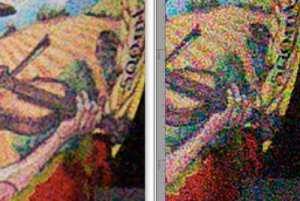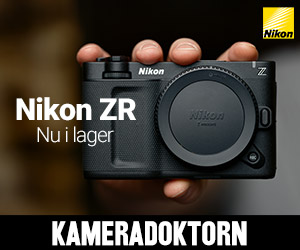Kanske för att det som jämförelse av "praktiskt bruk", med hänsyn till att det görs på nätet.
Rätt enkelt kan anses vara avsevärt närmare hur du upplever bilderna i verkligheten?
I jämförelse med "pixelpeeping" i 100% crop på extrema ISOn med alla former av brusreducering helt avslagna.
Det sista har oerhört lite med verkligheten att göra i min åsikt.
Är inte precis vanligt att bilder tagna av press/sport-fotografer används helt utan brusreducering och ännu mindre vanligt att de visas på ett sätt som motsvarar att titta på bilden i 100% crop på en bildskärm...
det är iof riktigt, men alla uppmätningar inkl DXO visar att d3s bildfiler innehåller mer färginformation, mindre brus och mer detaljer från 6400iso och uppåt och skilnaden blir mer påtaglig ju längre upp man går i iso.
Image resource sammanfattning
The Nikon D3S is still the high ISO champ, which is no surprise since the Nikon D3S's 8.5µm photosites are quite a bit larger. With only about 15% higher linear resolution, resampling the 1D Mark IV's slightly larger 16-megapixel images down to the D3S's 12-megapixels to reduce noise won't come close to making up for the difference in high ISO performance. The Nikon D3S clearly outclasses the Canon 1D Mark IV in this respect.
Angående Astrofoto som Sara tar upp ovan.
The readout noise of the Nikon and Canon CMOS detectors is very similar. The high ISO sensitivity displayed by Nikon is for the marketing: Nikon D3 CMOS (and also the CMOS D300 CMOS - Sony origin) is a very high quality sensor, but in the end, Nikon just rises now the level of Canon technology.
The behaviour of Nikon DSLR are radically different from the Canon ones for long exposure:
- For Nikon, the hot pixels are eliminated by a sophisticated digital processing external to the sensor. During this digital processing, the signal of the neighboring pixels is also affected. The damage of such processing is well-known in astronomy: the weak stars are also eliminated and the image loose photometric qualities on stellar like objects.
- For Canon, the thermal signal is reduced for each pixel by a differential reading method. The thermal signal level measured at the output of the sensor is very low. The residual can efficiently be removed during the image processing (a simple substraction of a reference dark signal map).
It is tragic to see that Nikon solved the problem of thermal signal by a digital processing of the RAW files (i.e. NEF files do not contain true raw data). This processing can surely meet the daytime users and the high performance for main application is evident. But by repeating the same mistake made on the D70 and the D200 (equipped with a CCD) on the news Digital SLR Nikon probably divorces once more with the astronomical community.
Today the Canon and Pentax cameras seem to be the only ones useable digital SLR for efficient and advanced astronomy.
ut och tjäna 100000:-








